How CA is maintaining community and mission across physical distance
This spring, much of the world stopped. With the global spread of the novel coronavirus (Covid-19), travel ceased, economies faltered, and many around the world sought shelter in their homes. This historic moment required CA to adapt quickly (one of our strengths, as the chameleon teaches us), and we have benefited from being guided by our mission during a time of fear, sorrow, and great uncertainty.
The U.S. response to the virus was just beginning as our school entered spring break in early March. For CA, a warning had come late in January, when a Model UN conference at Yale, attended by some of our students, was suddenly closed due to what turned out to be a false suspicion of a Covid-19 case. The month and a half before spring break allowed us to plan for the new conditions this pandemic would create and to prepare faculty and students for the possibility — and later, reality — of being unable to reunite in person for the rest of the academic year.
In our transition to distance learning, we have relied on our community’s ingenuity, humor, and exceptional capacity to care for and support one another, even through computer screens. Our goals have been simple: to maintain the culture we all love so much and to reimagine our shared educational and social experiences, despite physical separation. CA’s distance-learning plan has focused not only on academics but also on social connection and our foundational values. As our community has leaned into unfamiliar forms and structures, we have all been called upon to steer by our love of learning, our commitment to pursuing equity, and our rootedness in common trust.
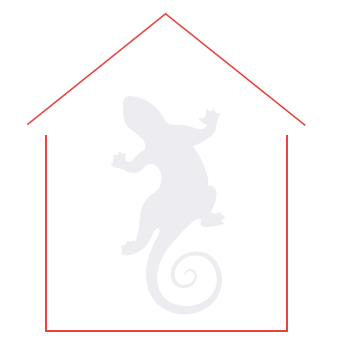
We have found some unexpected grace and insight in our adaptations. As CA has had to make a series of unprecedented decisions — to move to online learning, to close our campus, to reimagine our Commencement and reunion ceremonies — the outpouring of support has been inspiring. From simple patience and understanding to generous offers of social and financial support, we have been reminded of how profoundly grateful we are for CA’s extended community of students, families, faculty and staff, alumnae/i, board members, and friends.
What follows is a summary of our actions to maintain the CA experience through the end of this academic year. This snapshot in time reflects our efforts as of press time. A future issue of this magazine will devote more space to how our school has responded as well as to members of our community who have been on the front lines in various roles. In the meantime, we hope you will find strength, solace, and hope in your connection to our remarkable and resilient CA community, as we have.
Rick Hardy
Head of School, Dresden Endowed Chair
Fay Lampert Shutzer ’65
President, Board of Trustees
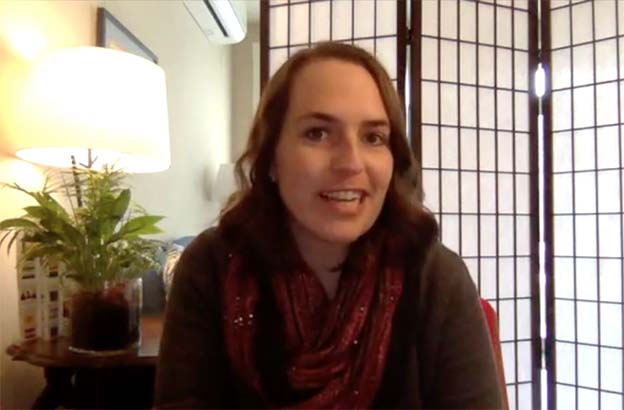
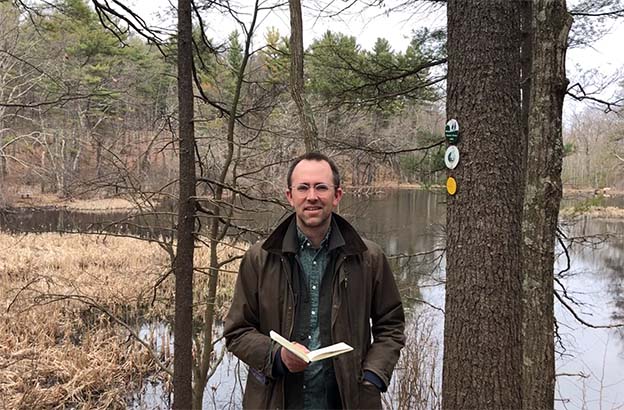
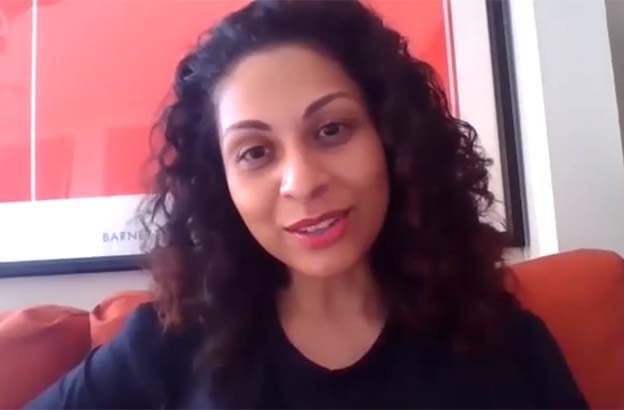

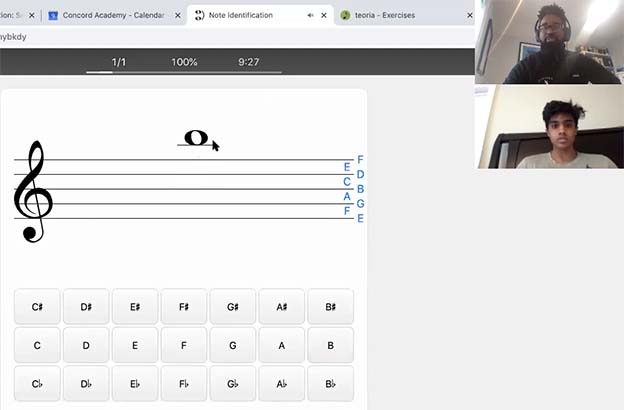

CA faculty and students connect virtually throughout the spring. Top row: Science teacher Kiley Remiszewski; English teacher Nick Hiebert; and English teacher Sabrina Sadique. Bottom row: Mathematics teacher George Larivee guides geometry students’ exploration using kusudama paper models; choral director Tai Oney gives a music theory lesson; and science teacher Brendan Crowley demonstrates a pendulum lab from home with his physics class.
CA’s Plan
In This Time of Distance, CA’s Guiding Spirit Is More Important than Ever
When setting out on any new journey, a guide can be invaluable. Laura Twichell ’01, interim academic dean, and Sarah Yeh, assistant head and dean of faculty, provided just that service in drafting Concord Academy’s distance learning plan for the remainder of the spring 2020 semester. Their plan is thorough, clear, structured, and sensitive to the varied needs of our students and faculty, and it beautifully articulates why CA’s values matter so much in this moment. Here is an excerpt:
“These plans for distance learning are guided by the mission. They also center the physical, social, and emotional well-being of each member of our community; create structure for an invigorating and rigorous academic experience for all students; and maintain relationships to support students at an uncertain moment. This distance learning plan is not just about covering the curriculum while we are apart: It is just as much about providing connection and structure in uncertain times.”
“While this may not be our ideal learning environment, we continue to strive to deliver on our mission and to create a challenging and supportive environment for our students. We acknowledge that the
distance-learning experience won’t replicate the CA classroom experience, yet we seek to maintain as many of the features that students and teachers value as we can: personal connections, the development of higher-order thinking skills, creative and thought-provoking assignments, individual choice and student-driven inquiry, and collaborative and cooperative work. In this model, teachers and students will continue to be in close communication and productive engagement. Indeed, there is opportunity in an unfamiliar setting to imagine and reimagine in partnership. Students and teachers will be learning together, a powerful, and empowering, model of education.”
A Day @ CA: Spring 2020
Scheduling for Learning Across the World
With CA students now spread across the globe, CA’s daily routine has altered to allow for participation from various international time zones. The resulting schedule enables both synchronous and asynchronous learning and supports the well-being of CA students through regular opportunities to check in with one another and with adults. Amy Spencer, Performing Arts Department head, was touched that, even though her Dance 1 class was scheduled at the earliest possible time (8:30 a.m. Eastern, not a popular choice for teenagers) to accommodate one student in Asia, every single member logged in exactly on time on the first day. “It was so clear to me how much they needed this connection,” Spencer says, “and I was fired up and ready to go.”

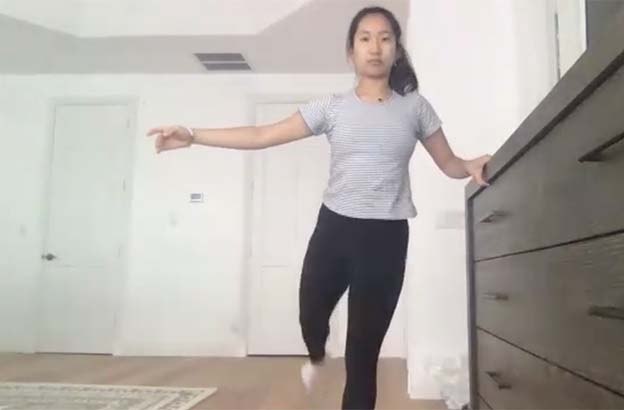
Amy Spencer (left), dance teacher and Performing Arts Department head, leads a ballet workshop class with several students, including Kelly Zhang ’22.
Community Meetings
Taking the place of our usual announcements, CA’s weekly community meetings now anchor our schedule. Held via virtual meeting software, these gatherings provide an opportunity for students to hear updates and reflections from administrators and other CA adults, as well as from one another. To date, meetings have included National Poetry Month readings, faculty discussions about the importance of social distancing, and even a tour of the Elizabeth B. Hall Chapel, which James Gow Jr. ’20 and Connor Dayton ’20 recreated in Minecraft.
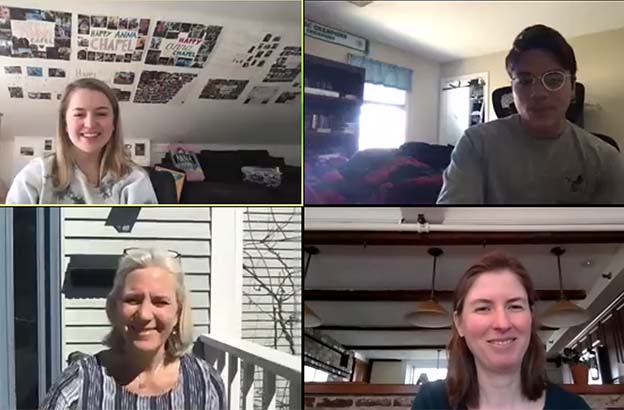
A community meeting with CA students and (bottom row, from left) Sally Zimmerli, dean of students, and Sarah Yeh, assistant head and dean of faculty.
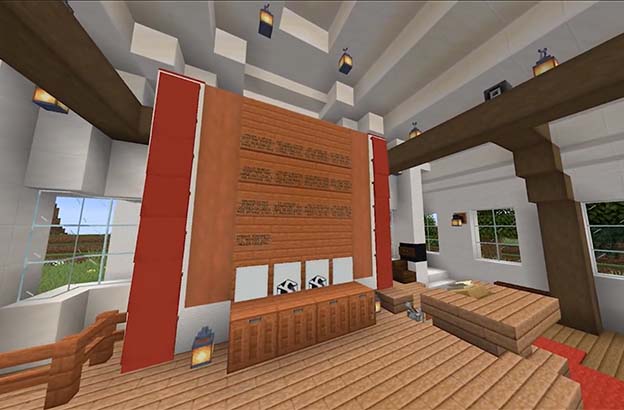
The First Corinthians carving in the Elizabeth B. Hall Chapel, lovingly recreated in digital form in Minecraft by James Gow Jr. ’20 and Connor Dayton ’20.
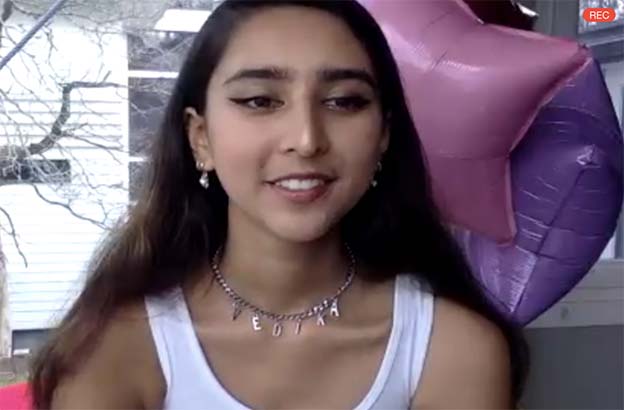
Student Head of School Vedika Sharma gives her chapel talk from her home.
Chapels
Chapel talks, CA’s singular rites of passage, still hold our collective attention. Through virtual meeting software, this significant experience for seniors and the community has been reshaped for video, complete with virtual friend benches and email hug lines. Faculty member Justin Bull created a Chapel background so that seniors can appear on video as if standing at the podium, write their initials on the chalkboard behind them, and display decorations from friends. Some students have chosen an alternative approach and recorded their talks elsewhere; one senior did so on the stone wall outside Concord’s Old Manse, editing in videos of her friends dancing during musical interludes. While we are unable to sit together beneath the Chapel’s soaring ceiling and beams, CA students have embraced this opportunity for creativity and expression. Music is still played, arms are still raised, and seniors continue to enrich us all by sharing their stories.
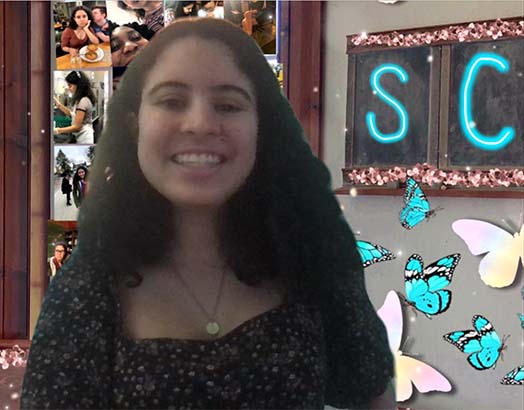
Virtual Chapel Talk
In the first video chapel talk of the spring semester, Sky Cole ’20 shared stories from her life and dispensed some senior advice.
“I am, and you are, more than capable of doing truly anything you put your mind to, but something always gives in exchange. Make sure you’re sacrificing an amount of time or energy that’s OK for you. I encourage you to demolish boundaries and expectations, but don’t do the same to yourself in the process. You are your most important project.”
– Sky Cole ’20
Classes
CA’s approach to academics for the remainder of the year has been to create a supportive structure to contribute positively to a healthy new normal for students. With equity and support as the school’s aims, CA has moved to a grading system of pass/no credit for all courses for the spring semester, and teachers have approached assessment of students’ work with compassion and flexibility, with the goal of helping every student demonstrate proficiency. Some classes, such as English literature, have continued largely unchanged; others, including science labs and hands-on arts courses, have required more reconceiving. Accelerated Physics students collected data in an online laboratory, worked in lab groups to graph it in a shared spreadsheet, and used the graphs to empirically determine the equation for the period of a pendulum. Advanced ceramics students, now without access to clay or a wheel, considered vessels in their homes, designed cups on paper, and talked with CA adults about their projects.
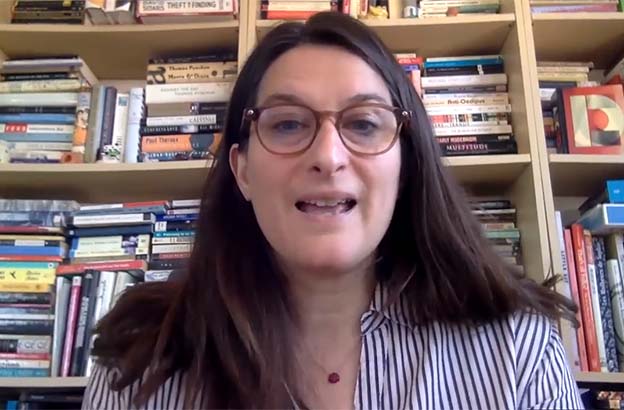
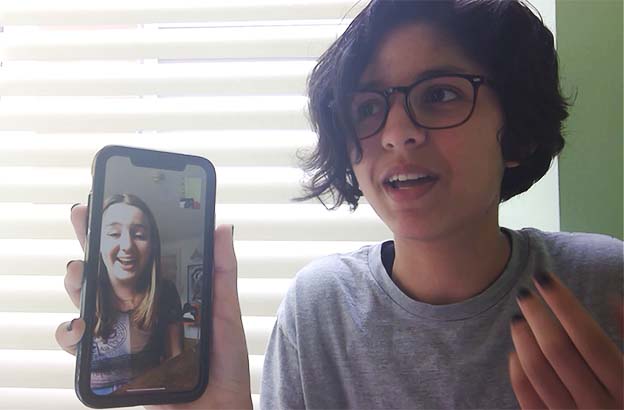
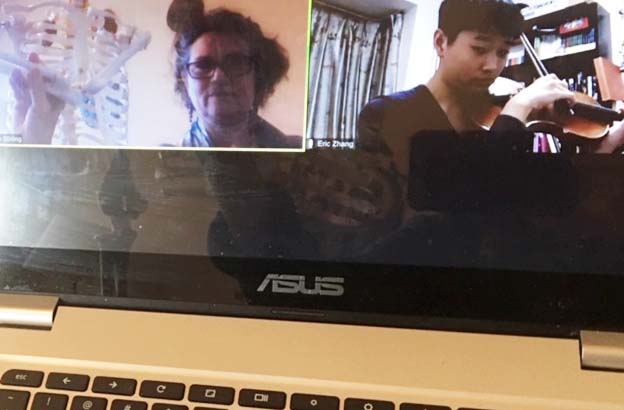

Top row: Laurence Vanleynseele teaches an English class; and Ava Grzeszcuk ’23 and Esmee Decola ’23 (via phone) take part in a long-distance, online improv scene for theater teacher Shelley Bolman’s Improvisational Play class. Bottom row: Jenny Stirling gives a violin lesson to Eric Zhang ’23; and Archie Daffner ’23 demonstrates a beautiful bow during an individual viola lesson. Stirling says that although lessons by videoconference are more difficult than working in person, one unexpected advantage has been the ability of students to observe themselves playing, and for student and teacher to observe, mimic, and respond to one another effectively side by side.
Beyond the Virtual Classroom
So much of what distinguishes CA has continued, albeit in altered forms. Advisors and advisees meet just as often. Individual music instruction continues virtually, and ensembles continue their music education. Directors’ Workshop plays are preparing scenes to perform at the end of the year, and senior projects have been reimagined for an off-campus context. Coaches have engaged their teams in weekly workouts, focusing on supporting movement, health, and wellness. Clubs and affinity groups continue to meet, now at daily lunch hours set aside for students to gather and socialize online. Dinner Docs even continues its weekly tradition of evening documentary film viewings!
Together Again
When will we be able to be together again? It is a question we are all asking — of our family, our friends, and, here in Concord, our CA community. As of this issue’s press date, we have decided to hold some virtual events on the original dates for Baccalaureate, Commencement, and Reunion Weekend, but we are postponing the physical events until it is safe to gather. While our desire to come back together remains strong, we live with the uncertainty about how our lives will resume or be altered, and also the knowledge that, whatever new approaches may be required of us, we will come through this together.
Stay Up to Date
More information about Concord Academy’s response to the coronavirus pandemic is available on our frequently updated Covid-19 updates page.


